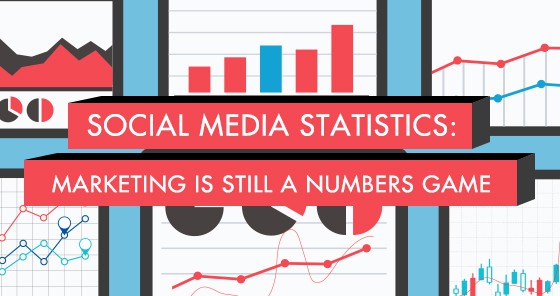There’s controversy storming across the face of the digital landscape. No, it’s not another algorithm change. It’s about social media marketing and ROI – and a growing lack of confidence among CEOs.
What Is Missing
In 2012 London-based Fournaise Marketing Group, a global leader in marketing performance and management, published the results of its Global Marketing Effectiveness Program. 1,200 large corporation and SMB CEOs and major stakeholders from across North America, Europe, Asia, and Australia were interviewed.
The results were staggering.
The single most common opinion of the company leaders queried was that “marketers are too disconnected from the financial realities of companies.”[1] The study found that
- “80% of CEOs believe marketers are too disconnected from the short-, medium-, and long-term financial realities of companies.
- “78% of these CEOs think marketers too often lose sight of what their real job is: to generate more customer demand for their products/services in a business-quantifiable and business-measurable way.
- “69% of B2B CEOs believe B2B marketers live too much in their creative and social media bubble and focus too much on parameters such as ‘likes,’ ‘tweets,’ ‘feeds’ or ‘followers’ – the very parameters they can’t really prove to generate more (business-quantifiable) customer demand for their products/services.”
Fault Lines
CEOs were clear where they felt the problems reside. “75% of CEOs think marketers misunderstand (and misuse) the ‘real business’ definition of the words ‘results,’ ‘ROI,’ and ‘performance’ and therefore do not adequately speak the language of their top management.” These dissatisfied CEOs cannot see why marketers cannot focus on a finite set of key performance indicators to measure and report on the customer demand levels they are asked to deliver “instead of drowning everybody with data and analyses that are too remote from the P&L.”
Great Expectations
What B2B CEOs expected from social media marketing included the following:
- “More customer demand means more products off shelves…more sales volume, more sales revenue.
- “More customer demand means fuelling more qualified or sales-ready prospects to the sales pipeline – prospects that can then be converted faster into actual revenue by sales forces.”[2]
The CEOs stated what they wanted to see from marketers.
The majority of B2B CEOS wanted marketers to focus on “tracking, reporting, and very importantly boosting four key marketing performance indicators:”
- Sell-in
- Sell-out
- Market share
- Marketing ROI
85% included:
- Prospect volume
- Prospect Quality Rate
- Marketing effectiveness rate[3]
- Business potential generated by marketing
Not A Lone Voice
Another viewpoint takes the study’s findings concisely. CMOs are
“…”losing a seat at the strategic table” and often ranking lower in title and stature and having a reduced scope of responsibility. Because of the lack of trust in their marketers, these CEOs have stopped imposing Key Performance Objectives (KPOs) and Key Performance Indicators (KPIs) for marketers….74% of CEOs think Marketers focus too much on the latest marketing trends such as social media – but can rarely demonstrate how these trends will help them generate more business for the company. For 67% of CEOs, Marketers don’t think enough like businesspeople: they focus too much on the creative, “artsy” and “fluffy” side of marketing and not enough on its business science.”[4]
Where The Truth Lies
First, it is critical to keep perspective in mind: A quarter of the world’s population uses social media.
And the percentage will only grow as countries continue to develop and gain access to technology: social media is at the forefront of establishing new markets where brands and products are completely unknown.
Social media is a powerful communication tool – but more than that, it is part of a subtle and dynamic process of creation and realignment of expectations in this vast participatory audience it has created.
What does this mean? It comes down to this shift: what before people wanted, they now demand – people expect to see businesses on social media. And not just present in a ho-hum sort of way, they want content that is meaningful to them, that engages them. They want an emotional connection with the businesses they give their patronage to. They want to give feedback on products and services. They want to have a level of trust to accompany their loyalty to a brand.
What does this mean? A large sector of a critical demographic (young through middle age) has changed. A revolution in perception and expectation smack in the beating heart of consumers.
So, social media to a large extent is about managing a population by fostering an engaging dialogue that acts to create an underlying emotive value to the business transaction. The value social media brings to an enterprise includes:
- The creation and fostering of the brand ethos
- The maintenance of reputation
- A critical component of customer relations
- Satisfaction of a key indicator of a business’ quality
- The production of sales leads
The Disconnect
CEOs report that social media marketers ignore the tenets of business science. And that can certainly be the case in some instances, but the truth of the matter is that the social media revolution is too new to have made a serious dent in the academic business syllabus. And where such a dent has been made, it is mitigated by the rapid development in mobile devices and the social media channels themselves – social media is skipping yards ahead of the classroom.
And then there is the hard data that is needed to back up what is taught in undergraduate business and MBA programs. There is some, but what is there is often out of date. There are pontificators making grand predictions of lofty heights and terrible falls, but the truth is this is guesswork – often by people who are not in the trenches. In consequence, social media marketing has not yet been brought under the staid umbrella of traditional business science.
But where the academic business world is measuring and thinking, the picture emerges that the dissatisfaction of business leadership is more about the lack of understanding that exists between marketers and that same leadership. Noting that 80% rate of dissatisfied CEOs must logically be set aside the implied 20% satisfaction rate:
“Most articles seem to suggest that isolating the incremental contribution of the marketer – versus all other firm activities – is easy. As every CMO knows, this isn’t the case. Academic scholars realize this as well, as there are leading thinkers who are searching for ways to measure the value that marketers contribute.”[5]
And that really sums up the reason for the fuss and bother. The social media marketer’s activity has extended far beyond sales alone – the social media marketer is dealing with new consumer attitudes that traditional metrics are in part incomplete to account for.
Social Media And ROI: Numbers
Social media ROI comes down to demonstrating concretely the tie-in between strategic endeavor and customer acquisition. It’s about the numbers:
audience size+conversion=target result.
The rule of thumb is that for any social media advertisement, of the total audience reached 1-2% will convert. That means in your audience reach only that 1-2% will click through a link.
Factor In The Reach
Facebook estimates that pages “organically reach about 16% of their fans on average.”[6] Taking this as our assumption, when you include this with the rate of conversion a picture emerges of where your strategy is going.
For example, taking a base of 1,000 followers yields an organic reach of 160 producing just 1.6 clicks through. Ramp up the audience to a million and the clicks jump to 1, 600.
Leads
But those clicks through are not the total picture. Lead capture is the whole point of endeavor, right? A reliable estimate of landing page lead conversion is around 2%. That means for our low-end figures of 1.6 clicks, we net the imaginary conversion value of 0.064. From the high-end, the conversions jump to 64.
So What
The critical factor is the reach. Adjusting reach is the best means of securing a successful social media deployment. A foundational element of pre-marketing strategy, establishing finite and communicable reach figures provides a sound success metric you can hang your hat on.
Let’s say you need 100 conversions. Reach per each conversion is 5000 individuals. That means that for 100 conversions you would need to achieve a reach of 500,000.
These figures are a baseline – you can optimize your advertising to improve the ratio of reach to conversion.
How To Make The Game Work For You
Social media is tough marketing because you are in effect trying to manage a community – one with constantly changing populations. The single greatest contributing factor to decreasing reach is the failure to engage. Take Twitter, for example, businesses can expect to lose between 5-15% of new followers within three weeks. Hoping for viral organic reach is about as prudent as counting on the lottery for your pension.
The easiest controllable factor affecting reach is advertising. But advertising rests on the quality of your content. Well crafted content provides the means to engage; advertising drives an audience to respond warmly.
Paying for social advertising makes sense. You can tap a fresh audience, but you can also use retargeting ads to increase conversions in followers. Advertising works because it employs a medium follower most closely associated with sales. Linking retargeting ads to content people already engage with allows you to revisit a population that failed initially to convert.
That’s not to say regular social media activity is not valuable. Part of the difficulty in assessing social media ROI is the fact that consumers expect to see businesses active on social media – so much so that a failure to do so can greatly decrease the brand value. Having a social media presence creates a place for consumers to engage with a company – the direct value of which can be funneled toward optimizing customer satisfaction.
Conclusion
Social media marketing is a unique component of a marketing endeavor. Calculating its ROI is difficult because what it yields an enterprise is more than revenue. Because of the unprecedented changes in communication, traditional customer bases have changed dramatically – in their expectations of what a business should be and do, and how they expect to interact with the companies they support.
Social media can be made to produce revenue – a good marketer is a good marketer no matter what media he chooses to communicate with consumers. But to reduce the critical role social media plays in establishing the reputation of a quality business, one that is responsive to today’s consumer, to the bare line of revenue only is really to misunderstand the contemporary marketplace and the need business faces to adapt to it.
When the consumer speaks, the business that will not listen does so at its peril.









